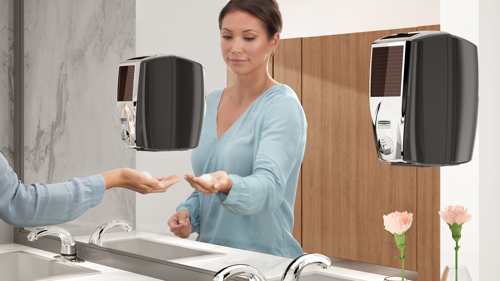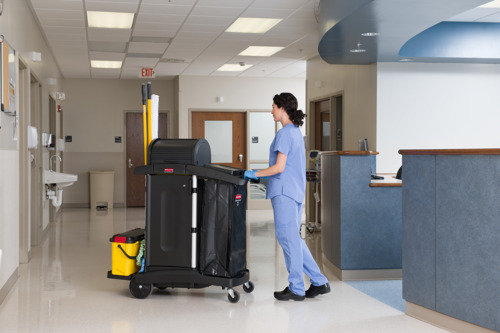
While all facilities require proper cleaning practices, environmental cleaning in aged care is especially important. The practice of environmental cleaning requires removing dirt and germs from both hard and soft surfaces. In the aged care industry, common surfaces include curtains, mattresses, sinks, door handles, walls, floors and furnishings. With a more vulnerable population at risk, it’s vital for aged care cleaning staff to use best practices along with the optimal disinfecting products and equipment. This helps to create a clean, safe and sanitary environment for residents, visitors and aged care staff.
The basics of aged care environmental cleaning
Keeping an aged care facility safe is a very important job, and proper cleaning is at the forefront of that task. Older adults are often more prone to infection and disease making healthcare associated infections more detrimental. This can be due to their compromised immune systems or other underlying health issues. Because of this, environmental cleaning procedures and standards are much higher in aged care facilities.
In its simplest form, basic environmental cleaning’s purpose is infection prevention and providing a clean and hygienic facility. All environmental surfaces should be cleaned, but high-touch areas will be cleaned most frequently. These types of areas include doorknobs and light switches. In addition to surfaces, staff will also need to keep routine cleaning equipment sanitary in order to prevent the spread of germs.
Environmental cleaning best practices
Now that we have a solid understanding of what environment cleaning involves, let’s discuss how to ensure that disinfection processes are efficient and effective.
Promote Hand Hygiene
Regularly washing your hands should be a part of standard hospital cleaning protocol. Common specific triggers for handwashing can be after cleaning a resident’s room or after removing cleaning gloves. Hand hygiene helps keep staff safe, while also reducing the spread of germs during rounds.
Implement a Cleaning Schedule
Residential aged care facilities should keep surfaces and equipment as clean as possible at all times. If an area is visibly dirty, that is an indicator that sanitation or disinfection needs to occur. But what if surfaces aren’t noticeably dirty? Cleaning schedules help facilities track and manage cleaning responsibilities to ensure that they remain safe and compliant. Rubbermaid Commercial Products SMARTCLEAN platform digitises this exact process. As an all-in-one intuitive cleaning management system, SMARTCLEAN can optimise current environmental cleaning services and increase aged care operational efficiencies. For a more in-depth look at aged care cleaning schedules and checklists, visit this blog article.
Properly store and restock cleaning agents
Environmental cleaning procedures don’t just include wiping surfaces and mopping floors. In fact, the process should start and end with fully stocked carts of cleaning products. Cross-contamination risk can be minimised with single-use products like cloths and mop pads. In addition to disposable items, you can also reduce cross-contamination risks by cleaning each area with two mop pads or two cloths.
For more information on proper care and storage of cleaning equipment, visit this page.
Ensure resident safety
Although it may seem like an afterthought, maintaining the safety of patients in an aged care facility should be in place even after cleaning is complete. When mopping during environmental cleaning procedures, always place caution signs in visible areas to alert both residents and visitors. Those who live in aged care are more prone to slipping or falling, so it is vital to keep possible hazards in mind while cleaning.
Environmental cleaning products
Detergents and disinfectants used for environmental cleaning can vary greatly. The detergent helps remove dirt, dust, body fluids and germs. It can be used on hard surfaces alongside warm water and proper cleaning equipment. A disinfectant’s job is to kill germs and reduce the spread of infection. These are best used after dirt and dust have been removed. It’s also important to make sure the surfaces dry completely after cleaning.
When chemical products aren’t in use, they need to be stored in dry areas, away from patients and remain organised. This is to ensure residents don’t come into contact with the solutions, and staff are able to easily identify what is what.
Environmental cleaning equipment
Cleaning solutions are only as effective as the equipment available to use them. Common equipment needed in residential aged care includes:
Rubbermaid Commercial offers a variety of cleaning products that ensure aged care facilities remain both clean and safe for residents, staff and visitors. Here are some recommendations that work well in this specific healthcare setting:
For more information about routine cleaning procedures and Rubbermaid Commercial products, visit our Aged Care Solutions page.